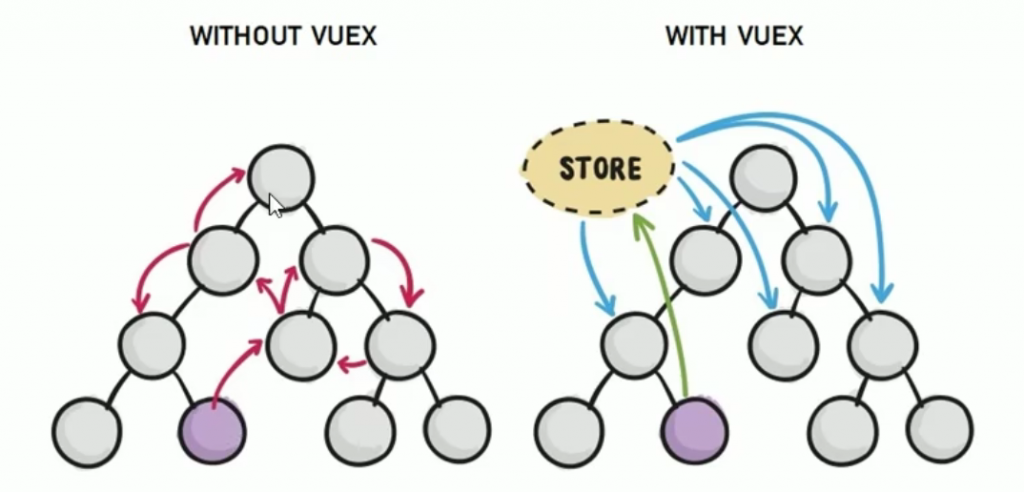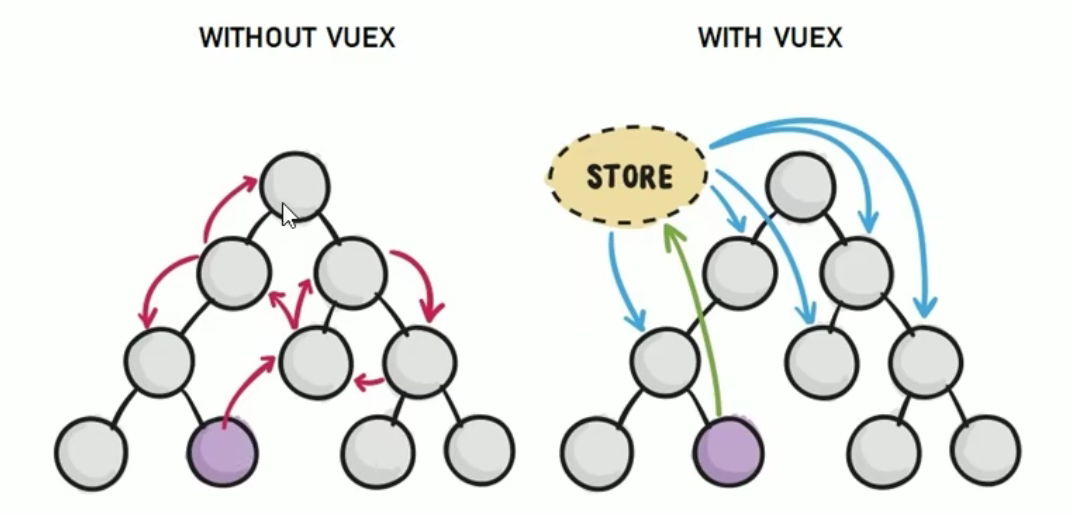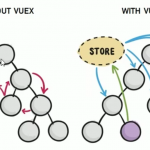本文以适用于 Vue3 的 Vuex4 为例。
一、Vuex 是什么

Vuex 是实现组件全局状态(数据)管理的一种机制,可以方便的实现组件之间数据的共享。
好处:
- 能够在 vuex 中集中管理共享的数据,易于开发和后期维护
- 能够高效地实现组件之间的数据共享,提高开发效率存储
- 在 vuex 中的数据都是响应式的,能够实时保持数据与页面的同步
注:一般情况下,只有组件之间共享的数据,才有必要存储到 vuex 中;对于组件中的私有数据,依旧存储在组件自身的 data 中即可。
二、Vuex 核心概念
1、state
state 提供唯一的公共数据源,所有共享的数据都要统一放到 store 的 state 中进行存储。
import { createStore } from'vuex'exportdefault createStore({state: () => ({count: 0; })}) 组件中访问 state 中数据的方式:
this.$store.state.全局数据名
按以下方式,可以绑定到计算属性上:
computed(){ count(){returnthis.$store.state.count; }} 但过于冗余,可以用 mapState 简化操作:
import { mapState } from'vuex'computed: { ...mapState(['count'])}2、mutations
mutation用于变更 store 中的数据。
- 只能通过 mutation 变更 store 数据,不可以直接操作 store 中的数据。
- 通过这种方式虽然操作起来稍微繁琐一些,但是可以集中监控所有数据的变化。
store.js 中:
import { createStore } from'vuex'exportdefault createStore({state: () => ({count: 0; }),mutations: {// 传递参数 add(state, step) { state.count += step; } }}) 组件中触发:
methods: { handle1() {this.$store.commit('add', 2); }} 也可以使用 mapMutations 触发 mutations,映射为方法:(更简洁)
import { mapMutations } from'vuex'methods: { ...mapMutations(['add', 'addN'])} 注:不要在 mutations 中执行异步操作,会导致调试器数据不同步!
3、actions
actions 用于处理异步任务。
如果通过异步操作变更数据,必须通过 actions,而不能使用 mutations,但是在 actions 中还是要通过触发 mutations 的方式间接变更数据。
const store = createStore({mutations: { add(state) { state.count++; } },actions: { addNAsnyc(context, step) {// 携带参数 setTimeout(() => { context.commit('addN', step); }, 1000) } }}) 触发:
methods: { handle() {this.$state.dispatch('addAsync', 5); }} 同样地,我们也可以用 mapActions 映射其到方法:
import { mapActions } from'vuex'methods: { ...mapActions(['addAsync', 'addNAsync']);}4、getters
getters 用于对 store 中的数据进行加工处理形成新的数据。
- getters 可以对 store 中已有的数据加工处理之后形成新的数据,类似计算属性。
- store 中数据发生变化,getters 的数据也会跟着变化。
const store = createStore({state: () => ({count: 0; }),getters: {showNum: state => {return`当前最新数量值:${state.count}`; } }}) 使用:
this.$store.getters.showNum
映射至计算属性:
import { mapGetters } from'vuex'computed: { ...mapGetters(['showNum'])}5、modules
业务逻辑不复杂时用不到。
参见:https://vuex.vuejs.org/zh/guide/modules.html
Q.E.D.



